English Medium
Academic Year: 2016-2017
Date & Time: 21st March 2017, 12:30 pm
Duration: 3h
Advertisements
 .
.
Chapter: [0.04] Carbon and its Compounds
Chapter: [0.07] How do Organisms Reproduce?
Chapter: [0.07] How do Organisms Reproduce?
Chapter: [0.04] Carbon and its Compounds
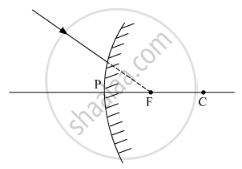
Chapter: [0.09] Light - Reflection and Refraction
Chapter: [0.13] Our Environment
Chapter: [0.16] Sustainable Management of Natural Resources
Chapter: [0.03] Metals and Non Metals [0.04] Carbon and its Compounds
Chapter: [0.04] Carbon and its Compounds
Chapter: [0.05] Periodic Classification of Elements
(a) Write its electronic configuration and determine its valency.
(b) Is it more reactive or less reactive than Ca (atomic number 20)? Justify your answer giving reason.
(c) Is it a metal or a non-metal?
(d) Write the formula of its oxide.
Chapter: [0.05] Periodic Classification of Elements
Chapter: [0.07] How do Organisms Reproduce?
Chapter: [0.07] How do Organisms Reproduce? [0.08] Heredity
Advertisements
Chapter: [0.07] How do Organisms Reproduce?
Chapter: [0.08] Heredity
Chapter: [0.08] Heredity
Chapter: [0.09] Light - Reflection and Refraction
Using the phenomenon of scattering of light, explain why there is a difference in the colour of the sun as it appears during sunrise and at noon.
Chapter: [0.1] The Human Eye and the Colourful World
Your mother always thought that fruit juices are very healthy for everyone. One day she read in the newspaper that some brands of fruit juices in the market have been found to contain certain level of pesticides in them. She got worried as pesticides are injurious to our health.
(a) How would you explain to your mother about fruit juices getting contaminated with pesticides?
(b) It is said that when these harmful pesticides enter our body as well as in the bodies of other organisms they get accumulated and beyond a limit cause harm and damage to our organs. Name the phenomenon and write about it.
Chapter: [0.13] Our Environment
What are fossils? How are fossils formed and how is their age determined? State the importance of fossils in the study of evolution.
Chapter: [0.08] Heredity
Give one example each of unisexual and bisexual flowers. Differentiate between the two types of pollination that occur in flowers. What happens when a pollen lands on a suitable stigma? Write about the events that occur till the seed formation in the ovary.
Chapter: [0.07] How do Organisms Reproduce?
What are esters? How are esters prepared? Write the chemical equation for the reaction involved. What happens when an ester reacts with sodium hydroxide? Write the chemical equation for the reaction and also state the name and use of this reaction.
Chapter: [0.02] Acids, Bases and Salts
Write the function of the following part of the human eye: Cornea
Chapter: [0.1] The Human Eye and the Colourful World
Write the function of the following part of the human eye:- iris
Chapter: [0.1] The Human Eye and the Colourful World
Write the function of the following part of the human eye: crystalline lens
Chapter: [0.1] The Human Eye and the Colourful World
Write the function of the following part of the human eye: ciliary muscles
Chapter: [0.1] The Human Eye and the Colourful World
Write the function of retina in human eye.
Chapter: [0.1] The Human Eye and the Colourful World
Analyse the following observation table showing variation of image-distance (v) with object-distance (u) in case of a convex lens and answer the questions that follow without doing any calculations:
| S. No. | Object-Distance u (cm) |
Image-Distance v (cm) |
| 1 | –60 | +12 |
| 2 | –30 | +15 |
| 3 | –20 | +20 |
| 4 | –15 | +30 |
| 5 | –12 | +60 |
| 6 | –9 | +90 |
(a) What is the focal length of the convex lens? State reason for your answer.
(b) For what object-distance (u) is the corresponding image-distance (v) not correct? How did you arrive at this conclusion?
(c) Choose an appropriate scale to draw a ray diagram for the observation at S. No. 4 and find the approximate value of magnification.
Chapter: [0.09] Light - Reflection and Refraction
Define the following terms in the context of spherical mirrors :
(i) Pole
(ii) Centre of curvature
(iii) Radius of curvature
(iv) Principal axis
Chapter: [0.09] Light - Reflection and Refraction
Draw ray diagrams to show the principal focus of a convex mirror.
Chapter: [0.09] Light - Reflection and Refraction
Draw ray diagrams to show the principal focus of a concave mirror.
Chapter: [0.09] Light - Reflection and Refraction
In the following diagram. MM' is a concave mirror and AB is an object. Draw on your answer-sheet a ray diagram to show the formation of image of this object.
Chapter: [0.09] Light - Reflection and Refraction
Advertisements
In the following diagram, the correctly marked angles are
(A) All
(B) Only ∠i and ∠A
(C) ∠i, ∠r and ∠A
(D) ∠i, ∠A and ∠D
Chapter: [0.1] The Human Eye and the Colourful World
When you focus the image of a distant flag, whose shape is given below, on a screen using a convex lens, the shape of the image as it appears on the screen is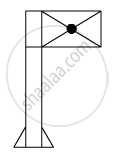
(A)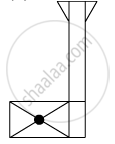
(B)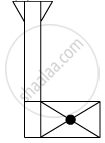
(C)
(D)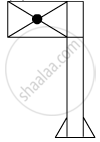
Chapter: [0.09] Light - Reflection and Refraction
An optical device has been given to a student and he determines its focal length by focusing the image of the sun on a screen placed 24 cm from the device on the same side as the sun. Select the correct statement about the device.
(A) Convex mirror of focal length 12 cm
(B) Convex lens of focal length 24 cm
(C) Concave mirror of focal length 24 cm
(D) Convex lens of focal length 12 cm
Chapter: [0.09] Light - Reflection and Refraction
Select from the following the best experimental set-up for tracing the path of a ray of light through a glass slab: (A) I
(A) I
(B) II
(C) III
(D) IV
Chapter: [0.09] Light - Reflection and Refraction
You are asked to prepare hard water in your laboratory. Select a group from the following groups of salts, any salt of which you may dissolve in distilled water to obtain hard water.
(A) NaCl; Na2SO4; KCl
(B) NaCl; CaCl2; KCl
(C) CaCl2; CaSO4; MgSO4
(D) Na2SO4; CaSO4; MgSO4
Chapter: [0.02] Acids, Bases and Salts
If you take some distilled water in a test-tube, add an equal amount of acetic acid to it, shake the test-tube well and leave it undisturbed on the test-tube stand, then after about 5 minutes what would you observe?
(A) There is a layer of water over the layer of acetic acid.
(B) A precipitate is setting at the bottom of the test-tube.
(C) Bubbles of colourless gas are coming out of the test-tube.
(D) There is a clear, colourless transparent solutions in the test-tube.
Chapter: [0.02] Acids, Bases and Salts
Which one of the following sets of materials can be used to prepare soap?
(A) Neem oil and calcium hydroxide
(B) Castor oil and sodium hydroxide
(C) Mineral oil and sodium hydroxide
(D) Neem oil and magnesium hydroxide
Chapter: [0.04] Carbon and its Compounds
Choose the correct statement(s) on budding in yeast from the following :
I. A parent cell divides into two or more daughter cells and here the parent identity is lost.
II. In this the elongated nucleus divides to form two or more daughter nuclei.
III. A bud arises from a particular region on a parent body.
IV. After detaching from the parent body the bud grows into a new independent individual.
(A) I only
(B) III only
(C) II and III only
(D) III and IV only
Chapter: [0.07] How do Organisms Reproduce?
Select a set of homologous organs from the following:
(A) Wings of a bat and wings of a butterfly
(B) Wings of a pigeon and wings of a bat
(C) Wings of a butterfly and wings of a pigeon
(D) Forelimbs of a duck, forelimbs of a cow and forelimbs of a lizard
Chapter: [0.08] Heredity
You have to perform the experiment, "To identify the different parts of an embryo of a gram seed." Describe the procedure that you would follow.
Chapter: [0.07] How do Organisms Reproduce?
Trace the path of a ray of light incident at an angle of 45° on a rectangular glass slab. Write the measure of the angle of refraction, the angle of emergence and the lateral displacement suffered by the ray as it passes through the slab.
Chapter: [0.09] Light - Reflection and Refraction
If you are asked to report your observations about the following two properties of acetic acid, what would you report?
(i) Odour
(ii) Effect on litmus
Chapter: [0.04] Carbon and its Compounds
If you take a pinch of sodium hydrogen carbonate powder in a test-tube and add drop-by-drop acetic acid to it, what would you observe immediately? List any two main observations.
Chapter: [0.04] Carbon and its Compounds
Other Solutions
Submit Question Paper
Help us maintain new question papers on Shaalaa.com, so we can continue to help studentsonly jpg, png and pdf files
CBSE previous year question papers Class 10 Science with solutions 2016 - 2017
Previous year Question paper for CBSE Class 10 Science-2017 is solved by experts. Solved question papers gives you the chance to check yourself after your mock test.
By referring the question paper Solutions for Science, you can scale your preparation level and work on your weak areas. It will also help the candidates in developing the time-management skills. Practice makes perfect, and there is no better way to practice than to attempt previous year question paper solutions of CBSE Class 10.
How CBSE Class 10 Question Paper solutions Help Students ?
• Question paper solutions for Science will helps students to prepare for exam.
• Question paper with answer will boost students confidence in exam time and also give you an idea About the important questions and topics to be prepared for the board exam.
• For finding solution of question papers no need to refer so multiple sources like textbook or guides.
